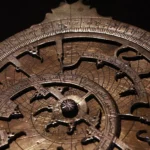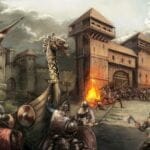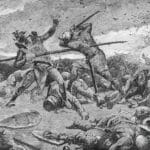Get ready to dive into the fantastical realm of Astolfo, the charming Rider from the popular Fate franchise. From their legendary roots in ancient tales of chivalry to their modern-day stardom in anime and video games, Astolfo has woven a spell on fans worldwide. Join us as we unravel their intriguing backstory, follow their incredible adventures, and explore the enduring magnetism that makes this enigmatic character so beloved.
Astolfo: Unveiling the Charm of Fate’s Cheerful Rider
Astolfo, one of the most popular characters in the Fate universe, possesses an undeniable charm. But what is it about this Rider that captures the hearts of so many fans? Let’s delve into Astolfo’s story to uncover the answer.
Astolfo’s origins can be traced back to classic literature as one of Charlemagne’s legendary paladins. Imagine a world of knights, adventures, and epic tales – that’s where Astolfo’s story begins. Transported to the Fate series, they are reborn as a powerful Servant, ready for magical battles and thrilling quests.
While powerful mages often conjure images of serious, brooding figures, Astolfo flips that notion on its head. As the “Rider of Black,” they are a whirlwind of energy and optimism, facing challenges with a smile and an unwavering belief in the good in others.
Through their adventures in Fate/Apocrypha and Fate/Grand Order, we witness Astolfo’s growth and self-discovery. Their loyalty to their friends is unwavering, and their kindness shines through in every interaction. Astolfo challenges the traditional image of a hero, proving that bravery and power can coexist with cheerfulness and compassion.
Astolfo’s appeal extends beyond their role as a magical warrior. They are cheerful, a bit goofy, and always try to see the best in people, making them incredibly relatable. Furthermore, their journey of self-discovery, particularly surrounding their gender identity, has sparked important conversations and made the Fate fandom feel more inclusive and welcoming to people of all identities.
Astolfo’s immense popularity stems from a blend of factors: their compelling history as a legendary paladin, their infectiously optimistic personality and unwavering kindness, and their courageous defiance of traditional norms. As the Fate series continues, it’s safe to say that Astolfo’s popularity will only grow, leaving a lasting mark on the world of anime and games.
Astolfo’s Gender: Deconstructing the Controversy
While Astolfo’s captivating personality and androgynous charm are undeniable, one question consistently arises: What is Astolfo’s gender? It’s a question that has sparked much debate and discussion among fans, and rightfully so. Astolfo’s gender identity is complex and defies simple categorization.
Although Astolfo is depicted with a feminine appearance and often presents themself in ways traditionally considered feminine, it’s important to acknowledge that they were assigned male at birth. However, this fact alone doesn’t fully define who Astolfo is. Astolfo doesn’t seem bothered by traditional gender roles or labels, embracing both masculine and feminine aspects of themself.
This intentional ambiguity on the part of the creators makes Astolfo a truly unique and important character. They challenge the notion of rigid gender binaries and demonstrate that gender is far more nuanced than simple labels.
Some fans believe that Astolfo might identify as transgender, while others perceive their gender as more fluid and non-binary. The beauty of it is that both interpretations are valid. Ultimately, it’s up to each individual to determine how they interpret Astolfo’s gender. There is no single right answer, and that’s part of what makes the character so compelling.
Most importantly, Astolfo teaches us about acceptance and inclusion. They demonstrate that it’s okay to be different, embrace your true self, and love yourself for who you are, regardless of societal expectations. This message resonates with people of all gender identities.
Unveiling Astolfo’s Origins: From Charlemagne to Fate
Astolfo’s captivating personality and androgynous charm have already been established, but let’s delve deeper into the historical waters where this intriguing character originated. To understand Astolfo’s roots, we must journey back to the time of Charlemagne and his knights, a period brimming with epic tales and valiant heroes.
Imagine yourself immersed in the grand stories of the Matter of France, a collection of poems that chronicle the legendary adventures of these figures. Within these poems, we encounter the earliest glimpses of Astolfo, not as the androgynous figure we know from Fate, but as a noble paladin—a brave warrior known for their incredible courage and, surprisingly, a mischievous streak that adds a dash of playfulness to their character.
Fast forward to the modern era, and we find Astolfo reimagined within the captivating world of the Fate franchise. Summoned as a heroic spirit, Astolfo takes on the role of a Rider-class Servant, ready to battle in extraordinary conflicts. While still embodying the cheerful and mischievous nature of their medieval counterpart, this modern Astolfo captivates audiences with a distinct androgynous appearance, a characteristic that has sparked fascinating discussions about gender identity and representation in contemporary media.
Astolfo Anime Guide: Unmasking the Rider of Black
For those eager to witness this legendary character in action, there are several anime series and video games where Astolfo makes an appearance. While their story originates in Ludovico Ariosto’s epic poem “Orlando Furioso,” written in the 16th century, Astolfo’s popularity, particularly in Japan, has led to various modern adaptations.
Here are some of the most popular places to find Astolfo:
Fate Series:
- Fate/Apocrypha (2017): This anime, part of the larger Fate universe, features Astolfo as a “Servant” – a heroic spirit summoned to fight in a magical war. They are bound to the Black Faction and serve under masters Celenike Icecolle Yggdmillennia and, later, Sieg.
- Fate/Grand Order (2015): This popular mobile game features a vast roster of historical and mythical figures as Servants that players can collect and use in battles. Astolfo is a fan-favorite Servant, appearing as both a Rider, known for their mounts, and a Saber, skilled with swords, depending on the version.
- Fate/EXTELLA LINK (2018): This action game allows players to immerse themselves in the Fate universe and control powerful Servants. Astolfo joins the roster as a playable character, providing an opportunity to experience their unique fighting style and personality firsthand.
Astolfo’s androgynous looks undoubtedly turn heads, but it’s their cheerful personality that truly wins people over. Their optimism, mischievous nature, and unwavering enthusiasm for adventure have solidified their status as a fan favorite. This popularity has led to an abundance of fan art and a secure place for Astolfo in pop culture.
The Fate series, particularly the anime Fate/Apocrypha, is an excellent starting point for those eager to learn more about Astolfo and the captivating world they inhabit. Fan wikis, such as the TYPE-MOON Wiki, also offer a wealth of information.
Key Points about Astolfo:
- Legendary Origin: Rooted in classic literature as a paladin of Charlemagne.
- “Rider of Black”: Powerful Servant in the Fate universe, embodying energy and optimism.
- Subverts Traditional Hero Image: Challenges the idea that heroes must be stoic and serious.
- Unwavering Loyalty and Kindness: Proves that bravery and power can coexist with cheerfulness and compassion.
- Relatable and Inspiring: Cheerful, relatable, and always tries to see the best in others.
- Exploration of Gender Identity: Journey of self-discovery has sparked important conversations and fostered inclusivity.
- Popularity Drivers: Combination of historical origin, optimistic personality, and willingness to challenge norms.
- Enduring Impact: Expected to continue growing in popularity, leaving a lasting impression in the Fate world and beyond.
- Unraveling Einstein’s Legacy: Who Inherited His Genius? - July 14, 2025
- Unlock Einstein’s Family Tree: Bernhard Caesar & Untold Stories - July 14, 2025
- Unveiling Bernhard Caesar Einstein: His Life & Albert Einstein’s Legacy - July 14, 2025
















